
Effecve project monitoring for ERP implementaon success: A case study in a S&M company in Vietnam*Le Duc Dao and Tran Xuan KhanhHo Chi Minh City University of Technology (HCMUT), VNU-HCM, Ho Chi Minh City, VietnamABSTRACTThis research paper shed a light on the challenges faced during the implementaon of an Enterprise Resource Planning (ERP) system in an organizaon, with a specific focus on project management and project monitoring. This paper also presents a case study of a company in Vietnam that experienced difficules during the go-live phase of their ERP implementaon due to poor project monitoring. The objecve of the research is to idenfy these challenges and propose a soluon to resolve the ineffecve project monitoring. By doing that, the paper highlights the importance of effecve project monitoring in ensuring the success of ERP implementaon projects. The results of implemenng the proposed soluon are promising, as demonstrated by a reducon in compleon me, eliminaon of late delivery days, and effecve management of resource deviaon. These outcomes illustrate the potenal for improving project efficiency, reducing costs, and ensuring successful ERP system implementaon. Overall, this research provides valuable insights and best pracces for organizaons embarking on ERP system implementaons, offering guidance on overcoming challenges and achieving a smooth and successful go-live phase.Keywords: project management, ERP implementaon, project monitoringEnterprise Resource Planning (ERP) is an integrated system implemented by businesses to improve internal business processes in various departments in order to provide greater efficiency, increased automaon to its processes, and improved communicaon across the business [1]. The enterprise resource planning (ERP) market in Vietnam has seen significant growth in recent years, driven by the country's expanding economy and increased adopon of digital technologies. According to a report by Technavio, the ERP market in Vietnam is expected to grow at a CAGR of over 9% during the period 2018-2022 [2]. This growth is being driven by a number of factors, including the increasing demand for ERP soluons from small and medium-sized businesses (SMBs), the growing need for integraon and automaon in business processes, and the government's focus on promong the adopon of digital technologies. In terms of the S&M business segment, Vietnam's SMBs are increasingly recognizing the benefits of implemenng ERP systems to streamline their operaons and improve efficiency. Enterprise resource planning (ERP) is soware designed for organizing and managing business processes (core and administrave) by sharing informaon across funconal areas. Core processes include producon planning and control, inventory management, purchasing, and distribuon; administrave processes include accounng (cost control, account payable and receivable, ect.), and human resource management [3]. This can help SMBs make beer-informed decisions, reduce costs, and improve their overall compeveness. Overall, the ERP market in Vietnam has strong potenal for growth, especially in the S&M business segment. As Vietnam's economy connues to expand and the adopon of digital technologies increases, more and more SMBs are expected to turn to ERP soluons to help them manage and grow their businesses.Most mulnaonal firms are using ERP and that more small and midsize companies have begun to adopt ERP. Despite ERP's promises to benefit companies and a substanal capital investment, not all ERP implementaons have successful outcomes. ERP implementaons commonly have 19Hong Bang Internaonal University Journal of ScienceISSN: 2615 - 9686Hong Bang Internaonal University Journal of Science - Vol.4 - June 2023: 19-26DOI: hps://doi.org/10.59294/HIUJS.VOL.4.2023.382Corresponding Author: Dr. Le Duc DaoEmail: lddao@hcmut.edu.vn1. INTRODUCTION

20Hong Bang Internaonal University Journal of ScienceISSN: 2615 - 9686Hong Bang Internaonal University Journal of Science - Vol.4 - June 2023: 19-26delayed an esmated schedule and overrun an inial budget [4]. With no specific plan or detailed procedure, the company may spend a great deal of resources, and me on ERP implementaon but may not enjoy a bit of the benefit the ERP system should have brought out. ERP is a management mode or techniques. Many companies regard ERP system implementaon as a project management [5]. Effecve project management is crucial for the success of any ERP implementaon, as it helps ensure that the project stays on track, on budget, and on schedule. Poor project monitoring can have serious consequences for an enterprise resource planning (ERP) implementaon, as it can lead to delays, cost overruns, and a failure to achieve the desired benefits. A typical successful ERP implementaon project has the advantages of cost and me reducon and high system quality. But besides the technical perspecve, the management part of the implementaon process is also a vital part contribung to the general success of the ERP system provider. In this research paper, we present a case study of an organizaon that was facing a number of challenges during the implementaon process, mainly arise from poor monitoring. These issues contributed to delays in the project and increased costs. To address these challenges and cut down the project me, we propose a soluon that focuses on improving project monitoring.2. THEORETICAL BASIS AND METHODOLOGY2.1. Theorecal Basis2.1.1. Enterprise Resource Planning (ERP)Enterprise Resource Planning (ERP) systems are a type of integrated soware soluon designed to manage and automate various business processes across an organizaon. These systems provide a centralized plaorm for managing and coordinang key business funcons such as accounng, inventory management, human resources, customer relaonship management, and supply chain management. The primary objecve of ERP systems is to improve organizaonal efficiency and decision-making capabilies by providing real-me access to accurate and comprehensive business informaon.ERP systems integrate with an organizaon's exisng systems and databases and can be customized to meet the specific needs of the organizaon. They are widely adopted by medium to large businesses and organizaons across various industries, including manufacturing, retail, healthcare, and government. ERP implementaon is a complex and challenging task, requiring significant resources and careful planning. The success of an ERP implementaon project depends on several factors, including the alignment of the ERP system with the organizaon's business processes, the level of user acceptance and training, and the effecve management of the implementaon project. A modern ERP system connects all business processes across accounng and finance, risk management, enterprise performance management (EPM), and more, providing a single source of truth for data [6]. However, ERP implementaon projects can also encounter significant challenges, including resistance to change, insufficient resources, and poor project management. Therefore, it's essenal for organizaons to carefully plan and execute ERP implementaon projects to maximize the chances of success.2.1.2. Project Management Project management is the use of specific knowledge, skills, tools and techniques to deliver something of value to people [7]. It is a muldisciplinary field that draws on theories and best pracces from various disciplines, including management, engineering, and computer science.ERP implementaon project management refers to the process of planning, execung, monitoring, controlling, and closing an ERP implementaon project in order to achieve specific goals and meet specific success criteria. It involves a wide range of acvies, including project planning, project execuon, project monitoring and controlling, and project closing. One of the key theories in ERP implementaon project management is the project life cycle, which describes the stages an ERP implementaon project goes through from iniaon to closure. The project life cycle typically includes the following stages: iniaon, planning, execuon, monitoring and controlling, and closing. Another important theory in ERP implementaon project management is the ERP implementaon methodology. ERP implementaon methodology is where the company declares their strategic decisions regarding how to conduct the

21Hong Bang Internaonal University Journal of ScienceISSN: 2615 - 9686Hong Bang Internaonal University Journal of Science - Vol.4 - June 2023: 19-26implementaon, and selects a focused path for ERP deployment [8]. There are several ERP implementaon methodologies available, such as the tradional Waterfall model, the Agile model and the Hybrid model. Each has its own advantages and disadvantages, and the choice of methodology depends on the specific needs and constraints of the project.2.2. MethodologyThe methodology employed in this study is outlined in the diagram below, providing a comprehensive overview of the research design, data collecon, and analysis methods ulized.Identify the ProblemBuild the SolutionEvaluate the ResultApproach the ObjectAnalyze the ProblemPropose the SolutionEstablish the Project PlanConduct the ProjectControl/Monitor the ProjectEvaluate the ResultGoal: Learning about the Object Method: Observe and Collect the Date Output: Object’ s informationGoal: Identifying the current situationMethod: Collect the Data, using Fish Bone DiagramOutput: Object’ s ProblemGoal: Finding the Solution for the defined ProblemsMethod: Study about the existed case-studies, other research.Output: Specific implementation stepsGoal: Setting Project s Goals, Allocate the tasksMethod: WBS, RAM Output: RAM (Responsibility Assignment Matrix)Goal: Allocating Project s ResourcesMethod: Gannt Chart, Pert/CPM, AON network.Output: Project Scheduling ResultGoal: Controlling and Monitoring the Project s ProgressMethod: PERT MethodologyOutput: Project’ s Probability of Completion timeGoal: Evaluating the Result Method: Comparing, BenchmarkingOutput: Evaluation ResultFigure 1. Approach Methodology

22Hong Bang Internaonal University Journal of ScienceISSN: 2615 - 9686Hong Bang Internaonal University Journal of Science - Vol.4 - June 2023: 19-263. CASE-STUDYThe implementaon of an ERP system is a significant undertaking for any organizaon, requiring careful planning and execuon to ensure a successful outcome. The go-live phase (which in this company's situaon belongs to the “Evaluate the result” phase”) is parcularly crical, as it marks the transion from tesng and development to live operaon, and any issues that arise during this phase can have a significant impact on the overall success of the project. This case study endeavors to analyze the experiences of a firm that recently integrated an Enterprise Resource Planning (ERP) system. Similar to numerous other organizaons in Vietnam, this company encountered difficules with monitoring during the implementaon phase, leading to an increase in costs and me. The objecve of this study is to examine the project management challenges encountered during the go-live phase and provide recommendaons for effecve monitoring steps to overcome these obstacles. The aim of this case study is to impart valuable insights to organizaons embarking on an ERP system implementaon, highlighng potenal challenges and offering best pracces for ensuring a successful go-live phase.3.1. Problems IdenficaonIn this case study, the term "delaying in the go-live phase" refers to any deviaon from the project meline that results in a compleon me longer than the allocated 5 days, or any deviaon from the expected quality of the final product that does not meet the specified requirements. This could include issues such as system downme, data migraon errors, or user training difficules that impede the smooth transion from tesng and development to live operaon. "The data collected from recent ERP implementaon projects at our company indicates that a staggering 70% of our customers have experienced delays during the go-live phase. This is a concerning trend, as it suggests that a significant proporon of our ERP implementaon projects are not meeng their expected melines or quality standards. A fishbone chart will be used to idenfy and analyze the main factors that led to deviaon in the compleon me of an ERP implementaon project at an agricultural company. The chart will focus on four main factors: Manpower, Method, Risk Management, and Milieu.In case of this company, one of the main challenges encountered during ERP implementaon is the presence of poor project management methods. This leads to a range of issues that hinder the successful deployment of ERP systems. Insufficient planning, ineffecve execuon, and inadequate monitoring and control of the implementaon project result in delays, cost overruns, and a failure to meet desired outcomes. In this research, we will address these challenges by focusing on a specific case study where a company poorly planned their
Project Fall Behind Schedule
ManMethodMilieuLack of effective comunicationRisk ManagementLack of Scenarios PlanningChanges in Customer’
s DataLack of valid/proper processLack of dataLate responses to changesHighly Customization in ProductIneffective resources allocatingShortage in HRAmbiguous contractLack of experience
Figure 2. Facts that may affect the ERP project's performance

23Hong Bang Internaonal University Journal of ScienceISSN: 2615 - 9686Hong Bang Internaonal University Journal of Science - Vol.4 - June 2023: 19-26ERP implementaon. By analyzing this case, we aim to idenfy the root causes of the problems stemming from poor project management and propose effecve soluons. Through this research, we will provide valuable insights and recommendaons to help SMBs avoid or overcome similar challenges and improve the success rate of their ERP implementaon projects.3.2. Soluon ProposingThis part will focus on the implementaon of a typical monitoring method for an ERP implementaon project at a company. The method being introduced is designed to improve the efficiency and effecveness of the monitoring process which will lead to solve the problems of delay in go-live phase. 3.2.1. Project PlanningThis part will outline the inial stage of the project, including the determinaon of project goals, the construcon of a work breakdown structure, and the creaon of a task deployment matrix for each team of personnel. This project comprises several stages in the implementaon process, including the creaon of key deliverables represented by a work breakdown structure (WBS). Here is the WBS of this project. 3.2.2. Project Scheduling In this secon, we will present the inial plan to implement the project. All of the specific informaon related to each task will be provided in the form of an aachment in the appendix 2. Ulizing this informaon, we will construct an Acvity-On-Node (AON) network diagram in order to graphically depict the project schedule and subsequently calculate the esmated project compleon me. This method allows for clear visualizaon of the project's interdependencies and dependencies between tasks, enabling effecve project planning and scheduling.
No
WBS
Task name
1
1.1
Project Preparation
2
1.2
Planning
3
1.3
Analyzing and Solution Designing
4
1.4
System Configuring
5
1.5
Testing
6
1.6
Transition
7
1.7
Operating
Table 1. Project's Work Breakdown Structure
Feasibility Analysis101010010Project Preparation7207310Project Kick-Off2310121012As is Process4412161216516211621Project Director Approval5621262126Project Kick-Off1726272627Project Personnel Preparation7827342734Architecture Design101141514151To-be Blueprint71034413441
Project Schedule7927342734(x)(y)

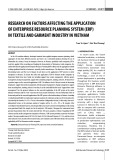

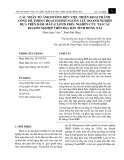
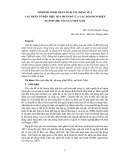
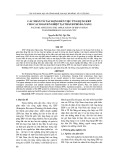
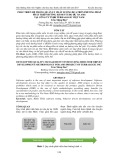
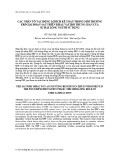
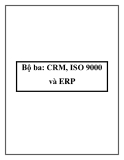




![Tối ưu hóa hiệu suất hệ thống: Bài thuyết trình [Chuẩn nhất]](https://cdn.tailieu.vn/images/document/thumbnail/2025/20251107/hiepdz2703@gmail.com/135x160/35941762488193.jpg)




![Bài giảng Quản trị chất lượng trong công nghiệp thực phẩm [chuẩn nhất]](https://cdn.tailieu.vn/images/document/thumbnail/2025/20250805/vijiraiya/135x160/637_bai-giang-quan-tri-chat-luong-trong-cong-nghiep-thuc-pham.jpg)

![Đề cương bài giảng Kỹ năng hoạt động công nghiệp [mới nhất]](https://cdn.tailieu.vn/images/document/thumbnail/2025/20250715/kimphuong1001/135x160/76971752564028.jpg)


![Bài giảng Kỹ thuật điều độ trong sản xuất và dịch vụ [mới nhất]](https://cdn.tailieu.vn/images/document/thumbnail/2025/20250630/dcbaor/135x160/13121751251866.jpg)


